Max Planck researchers decipher the chemical language underlying mating in 99 species of the genus Drosophila
Tag: ECOLOGY/ENVIRONMENT
Loss of biodiversity in streams threatens vital biological process
UNIVERSITY PARK, Pa. — The fast-moving decline and extinction of many species of detritivores — organisms that break down and remove dead plant and animal matter — may have dire consequences, an international team of scientists suggests in a new…
Scientists warn on the harmful implications of losing Indigenous and local knowledge systems
The study has been published in the Journal of Ethnobiology
From eyebrow beans to ‘lost’ rice: community seedbanks are protecting China’s crops
Despite being relatively new in China, community-led seedbanks are a valuable resource in conserving agricultural biodiversity. For the first time, researchers have provided a comprehensive summary of the services performed by 27 seedbanks across the coun
Freshwater methamphetamine pollution turns brown trout into addicts
Human pollution is often evident from oil slicks and plastic drifting on shore, but many of the drugs that we consume also end up washing out into our water and current effluent treatment isn’t equipped to deal with them. Drugs…
Methane in the plumes of Saturn’s moon Enceladus: Possible signs of life?
A study published in Nature Astronomy concludes that known geochemical processes can’t explain the levels of methane measured by the Cassini spacecraft on Saturn’s icy moon
University of Guam: Less than 10% of transplanted cycads survive long-term in foreign soil
Long-term monitoring needed to accurately measure transplantation success
Fossil shark scales provide a glimpse of reef predator populations before human impact
The results indicate that shark abundance in the region declined roughly three-fold since prehistoric times
Seabird colony creates ‘halo’ of depleted fish stocks
A vast seabird colony on Ascension Island creates a “halo” in which fewer fish live, new research shows. Ascension, a UK Overseas Territory, is home to tens of thousands of seabirds – of various species – whose prey incudes flying…
Male dragonflies lose their ‘bling’ in hotter climates
Less pigmentation keeps them cool, but could make it difficult to find a mate
Hunting and hidden deaths led to 30% reduction in WI wolf population
MADISON, Wis. — About 100 additional wolves died over the winter in Wisconsin as a result of the delisting of grey wolves under the Endangered Species Act, alongside the 218 wolves killed by licensed hunters during Wisconsin’s first public wolf…
New method to identify dirt on criminals can lead to prosecution
Scientists have taken the first steps in developing a new method of identifying the movements of criminals using chemical analysis of soil and dust found on equipment, clothing and cars. The locating system allows police or security services to match…
How can ‘shark dandruff’ contribute to coral reef conservation?
For 400 million years, shark-like fishes have prowled the oceans as predators, but now humans kill 100 million sharks per year, radically disrupting ocean food chains. Based on microscopic shark scales found on fossil- and modern coral reefs in Caribbean…
Microbes in cow stomachs can break down plastic
Bacteria found in the rumen, one of the compartments that make up the cow stomach, can break down plastics, representing an eco-friendly way to reduce litter
Stanford research shows muskrats are a bellwether for a drying delta
The muskrat, a stocky brown rodent the size of a Chihuahua – with a tail like a mouse, teeth like a beaver and an exceptional ability to bounce back from rapid die-offs – has lived for thousands of years in…
The missing ocean plastic sink: Gone with the rivers
The mysterious ocean plastic sink
Guadalupe fur seals continue to recover as new colony discovered
Guadalupe fur seals ( Arctocephalus townsendi ) have established a large resting colony in the Gulf of California–bringing the total number of sites where this endangered species now occurs to just four. This new haul-out was discovered on El Farallón…
Solving a long-standing mystery about the desert’s rock art canvas
Wander around a desert most anywhere in the world, and eventually you’ll notice dark-stained rocks, especially where the sun shines most brightly and water trickles down or dew gathers. In some spots, if you’re lucky, you might stumble upon ancient…
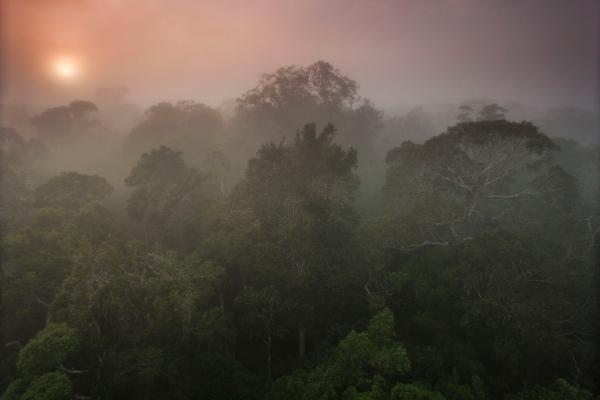
A 50% rise in the level of CO2 could reduce rainfall in the Amazon more than deforestation
A 50% rise in the level of carbon dioxide (CO2) in the atmosphere could reduce rainfall in the Amazon as much as or even more than substitution of the entire forest by pasture.
Striking a balance: Trade-offs shape flower diversity
An international research team led by a researcher from the University of Tsukuba proposes that catering to different visitors has influenced flower evolution
The rise and fall of elephants
Based on fossil finds, we know that the vast majority of species that once inhabited the earth have become extinct. For example, there are about 5,500 mammal species living on the planet today, but we know of at least 160,000…
Scientists resurrect ‘forgotten’ genus of algae living in marine animals
UNIVERSITY PARK, Pa. — In the late 1800s, scientists were stumped by the “yellow cells” they were observing within the tissues of certain temperate marine animals, including sea anemones, corals and jellyfish. Were these cells part of the animal or…
Cleaner air has boosted US corn and soybean yields, Stanford-led research shows
A key factor in America’s prodigious agricultural output turns out to be something farmers can do little to control: clean air. A new Stanford-led study estimates pollution reductions between 1999 and 2019 contributed to about 20 percent of the increase…
Is global plastic pollution nearing an irreversible tipping point?
Common press release: Stockholm University, Norwegian Geotechnical Institute, Alfred Wegener Institute Helmholtz Centre for Polar and Marine Research, Helmholtz Centre for Environmental Research
Better predicting how plants and animals will weather climate extremes
Leading scientists argue the need to consider biomechanics
Good food in a nice setting: wild bees need diverse agricultural landscapes
Research team investigates influence of different mass-flowering crops on pollinators
Last ice-covered parts of summertime Arctic Ocean vulnerable to climate change
In a rapidly changing Arctic, one area might serve as a refuge – a place that could continue to harbor ice-dependent species when conditions in nearby areas become inhospitable. This region north of Greenland and the islands of the Canadian…
Why are some fish warm-blooded? Predatory sharks gain speed advantage
New research from marine biologists offers answers to a fundamental puzzle that had until now remained unsolved: why are some fish warm-blooded when most are not? It turns out that while (warm-blooded) fish able to regulate their own body temperatures…
Conservation concern as alien aphid detected on Kangaroo Island
An invasive species of aphid could put some threatened plant species on Kangaroo Island at risk as researchers from the University of South Australia confirm Australia’s first sighting of Aphis lugentis on the Island’s Dudley Peninsula. It is another blow…
Wildfire changes songbird plumage and testosterone
Fire can put a tropical songbird’s sex life on ice.
Extreme events: Ecosystems offer cost effective protection
Decision-makers around the world are increasingly interested in using ecosystem solutions such as mangroves, coral reefs, sand dunes and forests on steep slopes to help buffer the impacts from hazard events and protect populations. But what evidence exists to show…
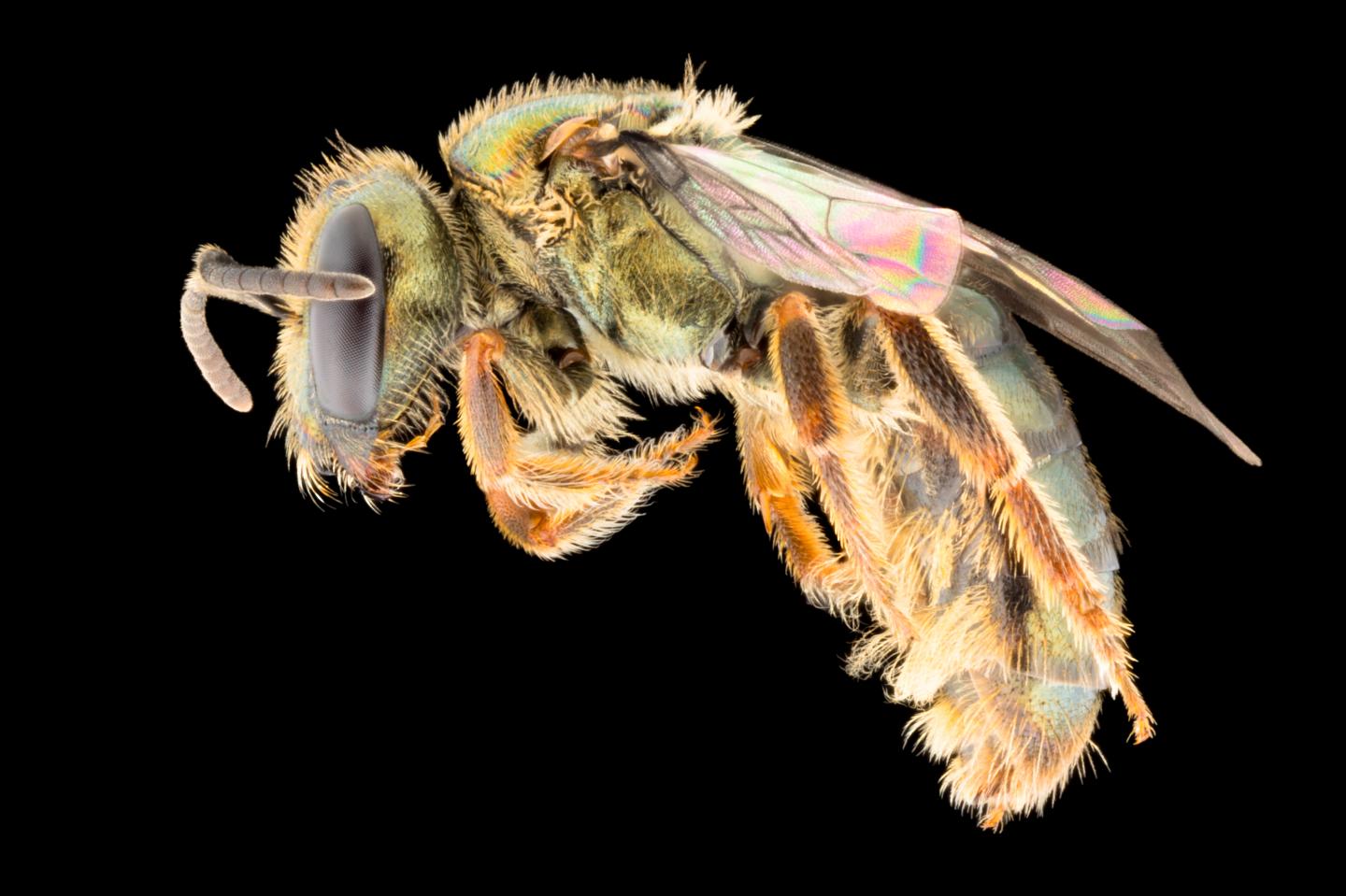
How humans brought change to a tropical paradise
After centuries of human impact on the world’s ecosystems, a new study from Flinders University details an example of how a common native bee species has flourished since the very first land clearances by humans on Fiji.
In with the old, out with the mew
Update to the check-list of North American birds publishes today in Ornithology
Baby reef fishes swim for gold
A new study has found baby coral reef fishes can outpace all other baby fishes in the ocean. Lead author Adam Downie is a PhD candidate at the ARC Centre of Excellence for Coral Reef Studies at James Cook University…
Reactive and inconsistent practices hamstring efforts to manage invasive plants in the US
As summer unfolds, more than 500 species of invasive plants will be taking root in fields, lawns, and gardens across the US. As plants continue to move north driven by climate change, the number of invasives will only increase.
Compost improves apple orchard sustainability
As the saying goes, an apple a day keeps the doctor away. But what’s the key to growing a quality apple? Apple trees need access to important nutrients, which come from the soil. However, soil is quite different from orchard…
Coral offspring physiology impacted by parental exposure to intense environmental stresses
Environmental disturbances, such as bleaching events, can have lasting consequences across generations of corals

Poaching Affects Behavior Of Endangered Capuchin Monkeys In Brazilian Biological Reserve
A study conducted in the Una Biological Reserve in the state of Bahia, Brazil, shows that in a habitat with high hunting pressure the risk of predation has such a significant impact on the behavior of the Yellow-breasted capuchin monkey Sapajus xanthosternos that it even avoids areas offering an abundant supply of plant biomass and invertebrates, its main sources of food.
Blackologists and the Promise of Inclusive Sustainability
Historically, shared resources such as forests, fishery stocks, and pasture lands have often been managed with an aim toward averting “tragedies of the commons,” which are thought to result from selfish overuse. Writing in BioScience ( https:/ / academic. oup.…
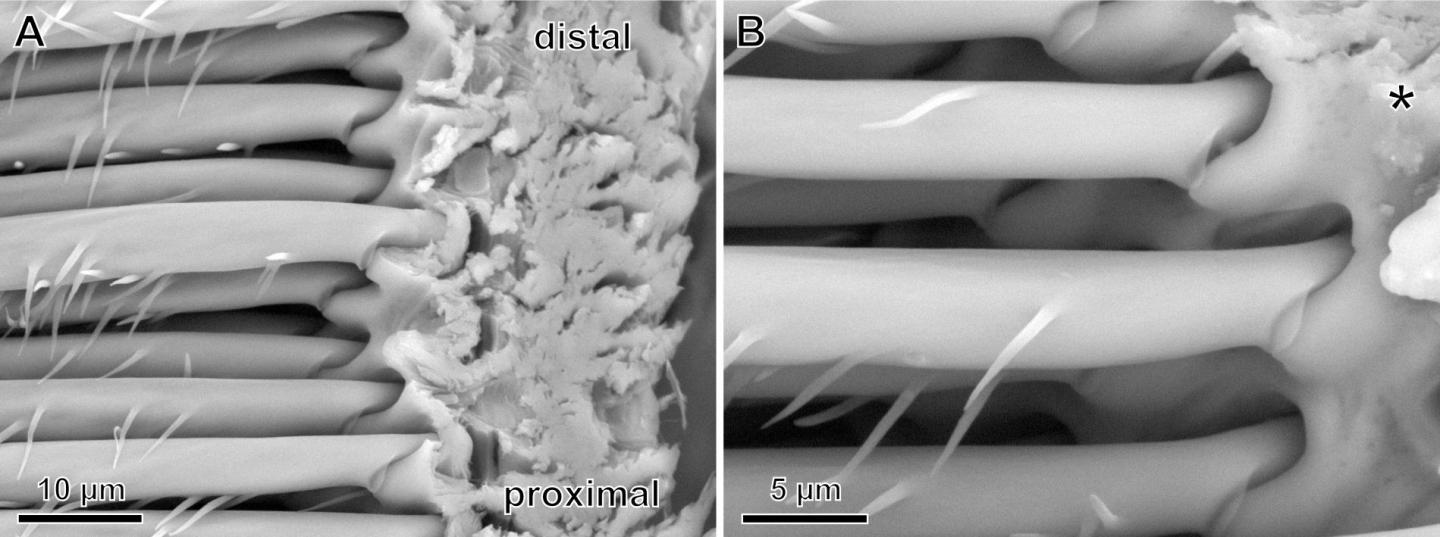
Surprising spider hair discovery may inspire stronger adhesives
Just how do spiders walk straight up — and even upside-down across — so many different types of surfaces? Answering this question could open up new opportunities for creating powerful, yet reversible, bioinspired adhesives.
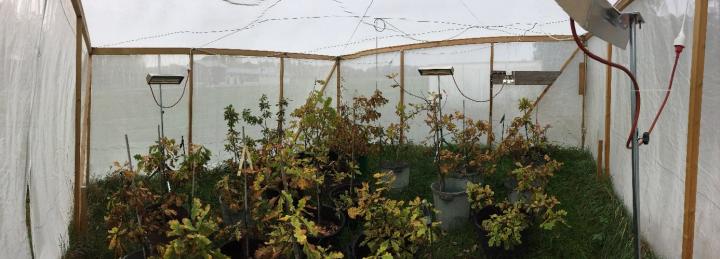
Climate warming can influence fungal communities on oak leaves across the growing season
Climate warming plays a larger role than plant genes in influencing the number and identity of fungal species on oak leaves, especially in autumn.
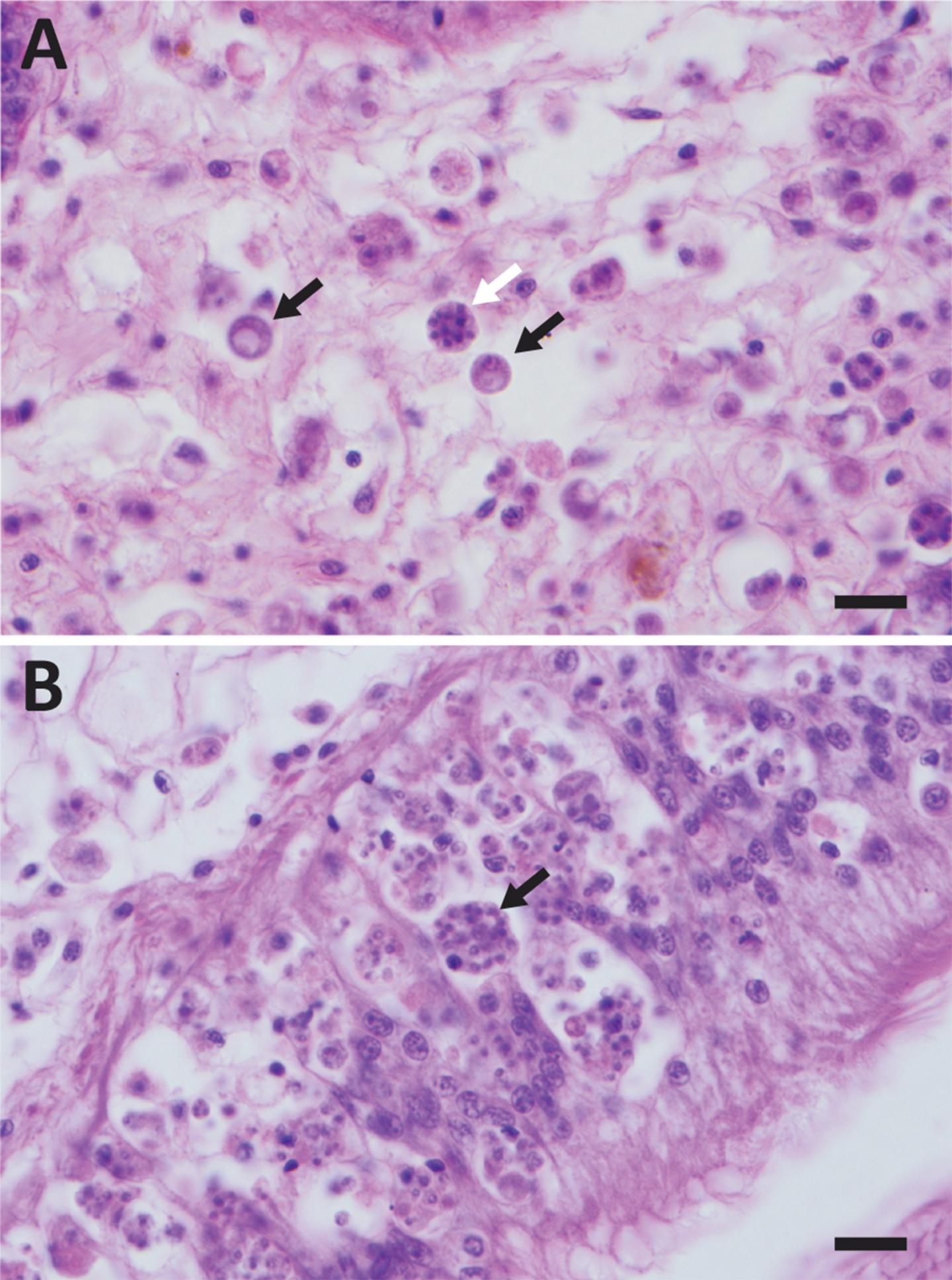
VIMS study uncovers new cause for intensification of oyster disease
A new paper in Scientific Reports led by researchers at William & Mary’s Virginia Institute of Marine Science challenges increased salinity and seawater temperatures as the established explanation for a decades-long increase in the prevalence and deadliness of a major oyster disease in the coastal waters of the mid-Atlantic.
Organic farming could feed Europe by 2050
Food has become one of the major challenges of the 21st century. According to a study carried out by CNRS scientists1, an organic, sustainable, biodiversity-friendly agro-food system, could be implemented in Europe and would allow a balanced coexistence between agriculture…
When tyrannosaurs dominated, medium-sized predators disappeared
New UMD study suggests that everywhere tyrannosaurs rose to dominance, their juveniles took over the ecological role of medium-sized carnivores
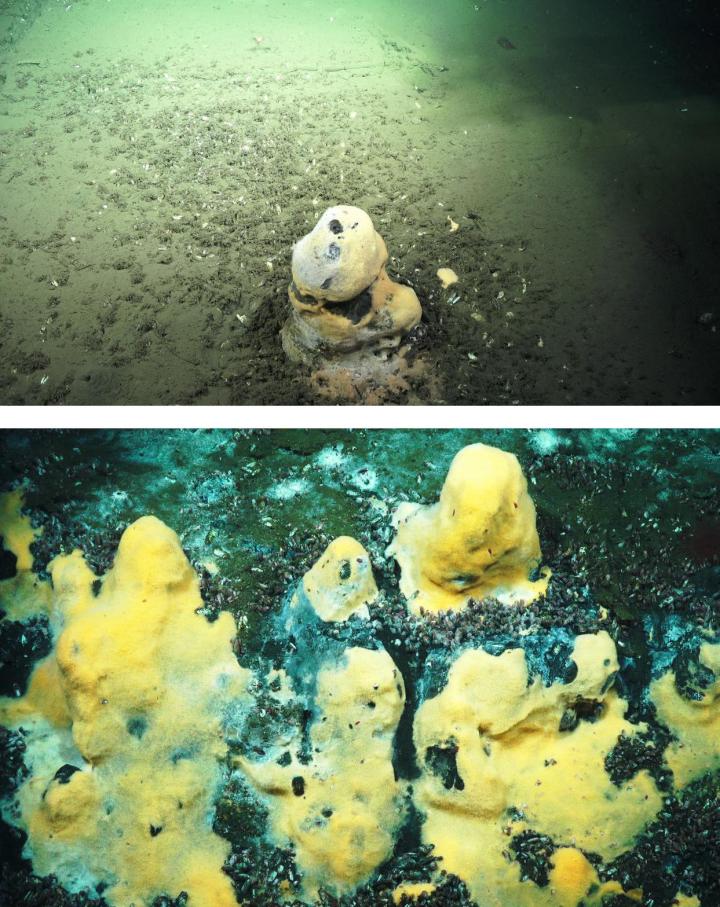
Microbes in ocean play important role in moderating Earth’s temperature
Methane is a strong greenhouse gas that plays a key role in Earth’s climate. Anytime we use natural gas, whether we light up our kitchen stove or barbeque, we are using methane.
Glyphosate pesticides persist for years in wild plants and cause flower infertility
Researchers show for first time that commonly used herbicides can persist within wild forest plants for years, reducing fertility long-term and potentially also impacting pollinators
We cannot cheat ageing and death
New study finds fresh evidence for our inevitable death
Fossil research shows woodlice cousins roamed Ireland 360 million years ago
New techniques used to recreate the image of the Oxyuropoda – the cousin of the garden woodlice
Measuring the elimination of plastic particles from the body in mice
Postdoctoral Researcher Outi Keinänen from the University of Helsinki developed a method to radiolabel plastic particles in order to observe their biodistribution on the basis of radioactivity with the help of positron emission tomography (PET). As a radiochemist, Keinänen has…
Poison frog tadpoles can survive (almost) anywhere
From orange juice to sea water, and between the ground and 4-story building